All Topics
- Alchemizing Music Concepts for Students
- Artist Spotlight
- artium gift card
- Artium Maestros
- Artium News
- buying guide
- Carnatic Music
- Devotional Music
- Editorials by Ananth Vaidyanathan
- Film Music
- Guitar
- Hindustani Classical Music
- Indian Classical Music
- Indian Folk Music
- Insights
- Instruments
- Karaoke Singing
- Keyboard
- Kids Music
- maestros
- Music Education
- Music for Kids
- Music Industry
- Music Instruments
- Music Legends
- Music Theory
- Music Therapy
- Piano
- piano guide
- Success Stories
- Tamil Film Music
- Telugu Film Music
- Time Theory
- Tools
- Uncategorized
- Vocal Singing
- Vocals
- western classical music
- western music
- Western vocal music
Thumri – The Music that Resonates with Emotion
Thumri – The Music that Resonates with Emotion

Table of Contents
The most diverse Hindustani music genre, Thumri, combines the diversity of classical and Light Classical, ragas and rhythms with poetry and folk culture to create an emotional bond. The article discusses in detail how Thumri was created and spread, and how it has influenced Indian music and film music.
Thumri is a distinct genre of Indian music characterized by its unique features. It emphasizes purity of expression more than raga. Among the many variations, this song most evidently reflects the essence of love and separation. The beauty of the North Indian language has made this song sweeter in performance.
Although Thumri, a form of Indian classical music, is generally taken to have originated in North India. Mirza Khan’s Persian text Tuhfat al-Hind (1675) similarly describes thumri as a modal entity; specifically, it is listed as a ragini of Shriraga, sung mainly in the Doab region.
It contains elements of ragas Shankara bharana and Maru, and is at least indirectly linked to the fashion of contemporary ragas such as kafi and pahari. Later, it spread to the land of Bengal through the endeavours of Nawab Wajed Ali Shah and many other musical geniuses.
What is the Origin of Thumri Songs?
The exact origin of Thumri music is difficult to pinpoint. Music is like a river that flows through time and space. However, according to music scholars, the continuous evolution of Thumri with characteristic features suggests several probable origins of this genre.
- It is believed that the dance performance of Kinnars in the royal court during the Vedic period gradually transformed and introduced this style of singing.
- The ancient ‘Chalika’ music, which was performed through dance songs and dramas, is believed by many to be the indigenous form of that Chalika. Because in that era, only the natis (dancers) or baranganas (courtesans) performed Chalika. It will be pertinent to point out that the author Nandagopal Biswas has observed, “The play ‘Malabikagnimitra‘ by Kalidasa beautifully describes the performance of the Chalika by Malavika.”
- In fact, the first historical reference of Thumri is seen in the monumental work ‘Rag Darpan’ by Gawaliyari Faqirullah Faqir Saif Khan (1665-66) wherein he mentions “.. the Indian raga or naghma Barwa is similar to and occasionally referred to as thumri..” (Anu Bala,2023)
- It is said that the emotional beauty of Bhairavi was enhanced after the genius of the King of Gwalior, Mansingh Tomar, added a contrasting tone to it, which was named ‘Tomri’,which gradually became popular as Thumari due to the difference in pronunciation.
- According to Vaishnavism, the ancient Thumaris written in Braj Bhasha are actually a form of Bhajan or Kirtan, which were later propagated in Varanasi.
| As commented by the researcher Peter L Manuel, “Its erotic (sringar ras) character, its flexible rather than scrupulous adherence to raga, and in some cases its association with krishnaite bhakti and the vernal Holi festival. An early antecedent to such songs would be the light, erotic catuspadi dance-song described in the Natyashastra, which was to be performed by women, in the lasya (graceful, effeminate) manner.” |
- Again, many believe that in ancient times, folk songs were performed through dance and music. As we have already seen in Rag Darpan, the author has traced the ancient Barwa song, which was famous in the Doab region, sung through dance as the origin of Thumri. It was transformed into light raga music and spread as Thumri.
‘THUMAKNA’ – To Walk with a Dancing Gait
This song, rendered in the dance ‘Thumak’ or ‘Thamak’ rhythm, was the mainstay of the Tawaifs’ livelihood, which could have brought about the name ‘Thumri’. The style of this song varies across different genres of singing styles. It is sung in a specific rhythm varying with instrumental accompaniment. Different researchers have also perceived Thumri to provide a voice to the Tawaifs.
The same is also supported by the biography of Gauhar Jaan by Vikram Sampath.

Thumri and Its Influence on Indian Film Music
Thumri is a singing style in Hindustani music in which the essence of the instrument is deeply intertwined. The poetic flow of this song reflects Vaishnavite philosophy. However, the movement and singing style of Thumri transcend the rules of the raga and flow in harmony with its rhythm, in tune with the aesthetic sense.
As devotion runs through the veins of our civilisation, thumri, in its evolved form, conveying the spiritual glory of Radha Krishna, became popular in the minds of countrymen. Thus, the music directors in films also thought it prudent to incorporate the same in their creations.
For example take the well known Thumri “Kaun gali gaayo shaam..”
….कौन गली गए 4ाम,
बता दे सखी कौन गली गए 4ाम…
कहां जा छुपे हो मेरे ɗारे कɎैया, Űज मŐ हो गई बदनाम,
बता दे सखी कौन गली गए 4ाम…
गोकुल ढूंढा मथुरा मŐ ढूंढा, ढूंढत हो गई 4ाम,
बता दे सखी कौन गली गए 4ाम…
This song expresses the heroine’s yearning for the lord or the beloved. Thumri’s Prakash Leela is centered around the passion and separation of a woman’s mind. Some of the songs directly mention Sri Radha and Sri Krishna.
Here, Sri Radhika’s longing after Sri Krishna leaves Mathura is expressed in the singing style of the “Khambaj” raga.
In the Hindi film Music, we also hear a song in the voice of Lata Mangeshkar Ji that combines two different ragas.
“Raina biti jayey Sham naa aaye Nindiya naa aaye..”
Song link:
The heroine expresses loneliness and sadness in this song. The use of ‘Meed’ and’Mudki’ can be discerned by samajhdars. Thumri has thus captured the realm of raga-based film music.
Therefore, by taking refuge in poetry and transcending the divine, Thumri songs have become one with the common man’s sense of life. This is the significance of Thumri. Thumri of the eastern region flourished in Benares. Thumri artists like Gauhar Jaan, Shobha Gurtu, Raushan Ara, Siddheshwari Devi, Begum Akhtar, and many other respected vocalists have enriched the Benares gharana.
What are the Characteristics Of Thumri?
Thumri is a style of singing that is rich in flavor, combining small tones, transitions from raga to raga, rhythmic inclinations, and “tarqeeb” tones.
What is Rhythm and Raga?
‘Raga’ is a structure of specific Swara combinations, which creates a mood. In raga-based music, the mood of the song is created depending on the mood of the raga. Thumri is a genre of applying the mood of raga music. Thumri songs use ragas that are relatively short in duration.
Raga in music is a form of musical foundation with swara-phrases, which, since the times of ancient India, has evolved gradually. Some Raga helps create a vibrant musical tone. Those ragas are used in Thumri, Dadra, etc.

Many Ragas are used by changing the key of ‘Murchhana’ of a particular raga. Even to create a mood, shades of two different ragas are often used in Thumri. Although this is outside the rules of pure classical music, this style is sung in Thumri, Dadra, etc. Thumri is a craft of a dynamic nature, so the nature of the raga in which it is sung is also dynamic. Accordingly, the ragas are selected and the thumris are composed. Thumri is sung in ragas like Bhairavi, Kafi, Pilu, Khambaj, Tilang, etc.
Rhythm in music is the pattern of sounds (beats) and silences. It creates a sense of sound movement and flow. ‘Taal’ is a rhythmic framework or cycle that defines the structure of a musical piece.
In Indian classical music, a “taal” is characterized by a cycling rhythm, often defined by a fixed number of beats (called “matras”), grouped into different divisions. Each taal has its unique pattern of strong and weak beats, creating a distinct feel and mood. Some well-known taals include:
- Dadra: Contains 6 beats, generally divided into two groups of 3
- Kaharwa: Comprises 8 beats, generally divided into two groups of 4
The concept of taal is also important in Light Classical music and other music genres, including certain folk traditions and popular music, where rhythmic structure plays a vital role.Thumri songs are sung at a gentle tempo, accompanied by rhythmic movements. The movement of the rhythm along with the movement of the song amplifies the impact of the song.
Thumri is sung in taals such as Jat, Dwipchandi, Dhumali Punjabi, Trital, Arddha, etc. Dadra, Kajari songs are usually sung in Dadra or Kaharwa taal.However, in the alternative, many film songs have been composed in the Dadra, Kaharwa rhythms, in the Thumri aang.
Short pieces of tan, mudki, gitkiri, and tarqeeb are sung in this song with an arrangement. Usually, the verses of thumri are very short and are divided into two stanzas. Thumri is an emotion that flows in one direction with the Raga and Taal.
- Language—Since the 19th century, Thumri has spread beyond language boundaries and emerged in the provincial dialects of India. It is mainly composed of Hindi, Urdu, and Brajbuli. However, Thumri can also be heard in other regional languages.
- Classifications of Thumri- There are three main types of Thumri songs:
- Kahan Thumri
- Lachao Thumri
- Punjabi Thumri
Nawab Wajid Ali Shah composed Kahan Thumri under the ‘Akhtar Piya’ pseudonym. This song was composed based on lyrics. He wrote about the sorrow of moving to Kolkata. He found peace in the art of Thumri. None can forget the sorrowful rendition “Babul mora naihaar chuto hi jaai.”
Additionally, another style of Thumri has gained popularity recently, known as ‘bol banao’. The Avadhi and Brajbhasha have been major dialects in this type of Thumri, which is often a kind of conversation. Use of soft words is noticeable.
Later, “Lachao Thumri” was created by Sadiq Ali, a court singer of Wajed Ali Shah. The tone of Lachaao Thumri is soft. The Punjabi Thumri uses more tappa styles.
The Journey Of Melody Continues
The subtle melody of modern, rhythmic music practice can be felt in the heart of Indian film music. Thumri songs have been instrumental in shaping the aesthetic sense of Indian music, both past and present. Therefore, it can be said that –
“The antiquity of such traditions has no doubt contributed to the tendency, evident in scholarly as well as popular literature, to overlook the dramatic stylistic changes that have occurred in Hindustani music in the last 150 years.” – Peter L Manuel.
Suppose you want to learn about the Thumri, Dadra, Kajri, and Chaiti genres of traditional Hindustani light classical music. In that case, the first prerequisite is to learn from a good teacher and follow the path shown by your Guru. Acquiring this kind of singing is essential, even for Hindi film music or any type of song.
Artium is your place to learn online music from qualified experts, get a Guru who will help you go through the curated courses on the portal.
At Artium Academy, online Indian classical music, online Indian film music, and a wide range of online courses are being offered, preserving the purity of the style.
FAQs on Thumri
Thumri has touched the heart of India as it blends the beauty and glory of ragas with everyday yearning for love or at times worship for the god.It is simple yet bejewelled with melody and notes. It is especially famous for:
Its emotional touch, Flexibility, Improvisation , Connection with dance, rasa and Devotion, Presentation with Taal and Raga.
1) Bhava (emotion): Thumri focuses on emotion . ,Expresses emotions through poetic beauty .
2) Flexibility : Thumri allows for free movement and improvisation compared to more rigid classical forms like khayal or dhrupad.
3) Improvisation: It emphasizes melodic ornamentation (murkis, meends, gamaks) rather than technical virtuosity.
4) Connection with Kathak Dance: Thumri is closely linked with Kathak, where the dancer interprets the lyrics and mood.
5) Devotional touch: Thumri songs are often written about Lord Radha Krishna, so even though it is romantic, they have a devotional touch also.
6) Use of taal: The movements of Thumri , its presentations with ‘laykari’ are full of variations.
For these reasons, Thumri has greatly earned its own unique place in the world of Hindustani classical music.
Thumri and Dadra are both light-classical vocal forms in Hindustani music, but Thumri is generally slower and more elaborate, while Dadra is faster and more compact.
Both are not completely identical in origin, but Dadra songs have the influence of Folk, where Thumri expresses the mood of the raga. They share some similarities also—like romantic/devotional themes and emotional expression, but they have clear differences in structure, rhythm, and style.
Here’s a more details:
- Mood (Rasa):: Thumri often has a longer, more improvisational structure, with extended melodic explorations. And Dadra is generally shorter and more compact than Thumri, with less emphasis on extended improvisation.
- Lyrics: Thumri focuses on romantic and devotional themes, with a sensuous quality and emphasis on expressing emotions. In Dadra,we can watch similar themes of love and longing as Thumri, but with a lighter, more playful mood.
- Usage in Dance: Thumri is Closely associated with Kathak . Dadra Also used in dance, but less frequently.
- Performer Style: Thumri is sung by classical singers with emotive depth. And Dadra Often sung by light classical or even folk artists.
- Ornamentation: Rich in meend, murki, gamak (voice modulations) are used in Thumri. Includes different styles like Bol Banao Thumri, which emphasizes emotional interpretation of lyrics , In Dadra ,Similar but often less complex modulations are used.
- Tempo: Thumri is slower and more expansive than Dadra.
- Tala: Thumri is sung to Jawt (8 Matra / 16 Matra) , Deepchandi (14 Matra) , addha (16 Matra) , and Dadra is sung to Dadra (6 Matra) and Kaharwa (8 Matra).
There are three main types of Thumri style –
- Kahan Thumri
- Lachao Thumri
- Punjabi Thumri
1. Kahan Thumri:
“Kahan” as a Lyric Theme in Thumri. In many Thumri compositions, the word “Kahan” (कहाँ, meaning “where”) appears in the lyrics, particularly in those related to the themes of Radha-Krishna love and separation. Everyday contexts include Radha searching for Krishna or lamenting his absence. Nawab Wajid Ali Shah composed Kahan Thumri under the ‘Akhtar Piya’ pseudonym.
This song was composed based on lyrics. In this Thumri, lyrics and emotions are given more importance, with Biraha rasa, Sringar rasa, and love being highlighted.
Some famous Thumri compositions of “Kahan” thumri are
a) “Kaun gali gayo Shyam”
b) “Mora saiya bulaye andhi raat”
2. Lachao Thumri:
Lachao Thumri was created by Sadiq Ali. The tone of Lachaao Thumri is soft.Later, these two styles spread to North India. Lachao thumri is actually ‘Lachakdar Thumri’
“Lachakdar” Thumri – Meaning & Style.The word “Lachak” in Hindi means: Graceful bend or sway.
A kind of lilting movement, often associated with sensuality, grace, or feminine charm.So, a “Lachakdar Thumri” (sometimes pronounced “Lachao” Thumri colloquially) refers to a style of Thumri that is highly expressive in its melodic movement.Full of ornamentation (murki, meend, andolan) to show emotional and physical grace ,often associated with Kathak dance, where the dancer interprets the music with graceful movements.
Mood (Rasa): Romantic, sensuous, playful (Shringara Rasa)
Used in Dance: Especially in Kathak
Ornamentation: Heavy use of murkis, taans, gamak, and meend
Lyrics: Often playful or teasing — Radha-Krishna themes common
Popular Ragas: Khamaj, Kafi, Piloo, Bhairavi, Desh
Tempo: Medium to slow, allowing grace and swaying emotion
Some famous Lachao Thumri:
- “Baju Band Khul Khul Jaye”
- “Ab Ke Sawan Ghar Aaja”
3. Punjabi Thumri:
Punjab-style Thumri is a distinct regional variant of the Thumri tradition within Hindustani classical music. It developed in the Punjab region, and has its own stylistic flavor compared to the more widely known Purab ang Thumri (from Banaras/Lucknow).
It has strong influence of Khayal and Tappa, more melodic and raga-oriented, with classical structure, more emotive, with freedom in note choice. Heavy use of taans, bol-taans, and murki ang. It has more playful and emotive lyrics , It has folk influence and Dynamic style.
Some Famous Panjabi Thumri
a) ” Kahe ri nandiya”
b) “Yaad piya ki aaye”
Thumri song and Bandish are both forms of Hindustani classical music, but they differ significantly in style, structure, and presentation. Here’s a clear comparison:
Bandish: The melodic composition of the bandish is fixed to a specific rhythmic cycle. The speed of the rhythm, beats (Matra), divisions, movement, and Theka of taal play a crucial role in Bandish. It is the framework or foundation for Khayal, Dhrupad, and other forms. A raga is performed centered around Bandish, and its discipline is essential. The performer expands upon it through improvisation – alap, sargam, taan, laykari, etc.
Thumri: Thumri songs are self-contained musical pieces, meant to be performed as is, though often ornamented with improvisation and emotion. It is sung especially by Bal Banab; there is no strictness of rhythm here. Thumri is a light classical genre of Hindustani music, renowned for its emotional expression, particularly in the realms of Shringar rasa and devotion. It is a complete vocal form that includes lyrics, melody, and performance style
Roll of Taal
Thumri song uses lighter ragas, with a flexible structure. Often set in Kaharwa, Dadra, Jawt, Addha, or Deepchandi taal. Its speed is medium.
But Bandish strictly follows raga rules. Usually set in complex talas like Teentaal, Ektal, Jhaptaal, Rupak, or Jhoomra.
Use of Raga
Thumri is usually sung on a small, limited range raga, and other ragas are also used to express beauty. Its focus is on emotion (bhava) and lyrics, especially romantic or devotional themes (like Radha-Krishna love). The lyrics are often written in Awadhi, Braj, or Hindi.
Bandish strictly follows raga rules. Follows the ‘Dashaprana’ Rule and Vadi, Sambadi, Pakad, etc. Properly... Bandish is written in Hindi, Brij, Urdu, or Sanskrit, but with a more abstract or symbolic meaning.
In Thumri, specific ragas are favored for their emotional richness, flexibility, and ability to express romantic or devotional moods. While khayal or dhrupad has strict grammar, thumri allows for freedom in note usage, often blending ragas and using ornamentation to enhance bhava and Rasa.
Here’s a curated list of ragas typically used in Thumri, along with their emotional tone:
1) Bhairavi: It has a devotional, romantic, and sorrowful mood.Most iconic raga for Thumri; often sung at the end of concerts
2) Khamaj : It has a romantic, graceful, shringara rasa mood. Sweet and flexible, it often allows the use of both shuddha and komal notes.
3) Kafi : It is folk-like, sensual, and playful. Evokes earthy emotions; used in both romantic and devotional Thumris.
4) Desh: It has a monsoon mood, longing, and a romantic feel. Frequently used for themes of viraha (separation).
5) Piloo: It has a tender, playful, and emotional mood. Highly flexible; often used for mixing phrases from other ragas.
6) Jogia: It has a devotional, introspective morning raga; ideal for bhakti-based Thumris.
7) Tilak Kamod: It is a romantic, elegant, expressive raga, which suits delicate lyrics with subtle ornamentation.
8) Pahadi: It has a nostalgic, folkloric flavor. Often used for light Thumris with a rustic feel.
9) Maand: It has a folk-influenced, sweet, lyrical mood. Derived from Rajasthani music, popular in semi-classical.
10) Majh Khamaj: It has a light, romantic monsoon mood , it is a ‘Madhyam Gram Murchhana’ of raag Khamaj.
11) Gara: It has mixed emotions, expressive mood. Allows creative improvisation; blends major and minor moods
12) Sindhura: It is a Sweet, gentle, devotional raga,Used in Thumris with Radha-Krishna themes
We can often play more than one raga while performing Thumri for its beautification.
Khayal and Thumri both represent the Hindustani classical genre. But there are some differences between the nature of the presentation and the length.
Khayal:
The term Khayal derived from the name Quali .Some days the Indo-Parsian Scholar Amir invented the Khyal. Khayal originated in the late 16th century. Naimat Khan (1670–1748) composed Khayal with his pen name ‘Sadarang’ and served it in the court of Mughal Emperor Muhammad Shah (ruled 1719-1748) , Sadarang composed Khyal for his disciples but he never performed Khyal.
The rules of rhythm and raga are followed in particular in Khayal. The Anushasan (discipline) of raga is very important here.A serious, introspective, and elaborate form of classical music.Focuses on raga purity and technical sophistication. Nature and Style of Khayal emphasizes improvisation and development of the raga.Lyrics are often abstract, philosophical, or devotional.The words are often secondary to the musical elaboration.
Thumri:
Barua- Geeta sung in Doab area, some musicologists believe that from that genre of music, Thumri songs were born, adopting classical forms and ragas.
Therefore, Thumri expresses more emotions than the raga rules allow. Nawab Wajid Ali Shah (30 July 1822 – 1 September 1887) was the first musician as well as composer who improvised Thumri into Semi-classical form. Thumri is a light classical form, characterized as more romantic, emotional, and expressive.Focuses on bhava (emotion) and lyrics rather than strict raga rules.More ornamental and sensuous in nature. However, like Khayal, Thumri does not strictly adhere to the raaga rules, instead expressing the melody, emotion, and mood. Thumris are like documents of a society of a certain time. Lyrics are central, often in Hindi, Awadhi, or Braj. Themes are typically romantic, devotional, or emotive, usually revolving around Krishna-Radha narratives. Normally, in a medium or slow tempo. More free-flowing, often with bol-baant (word-based improvisation).

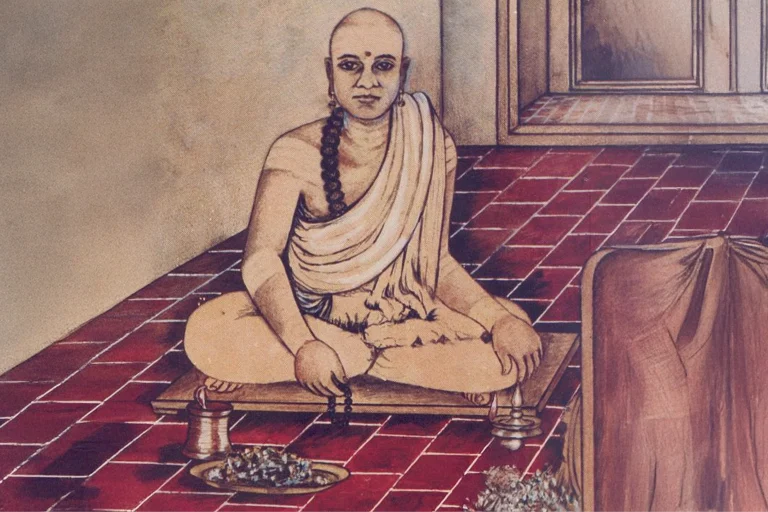
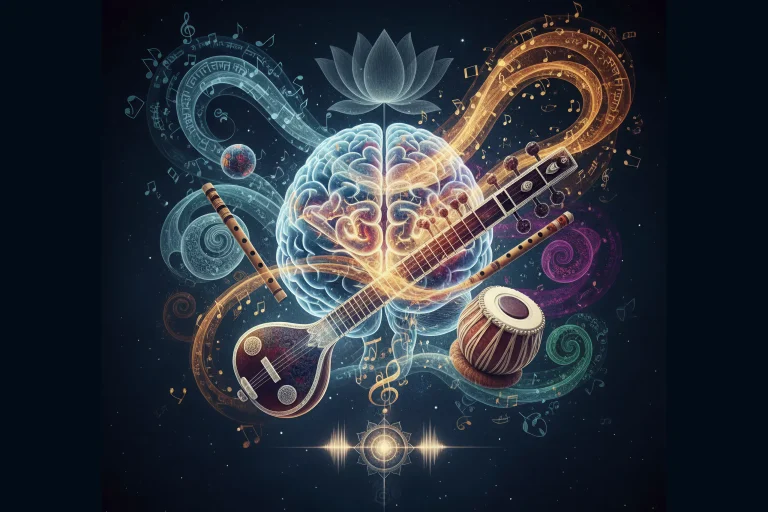
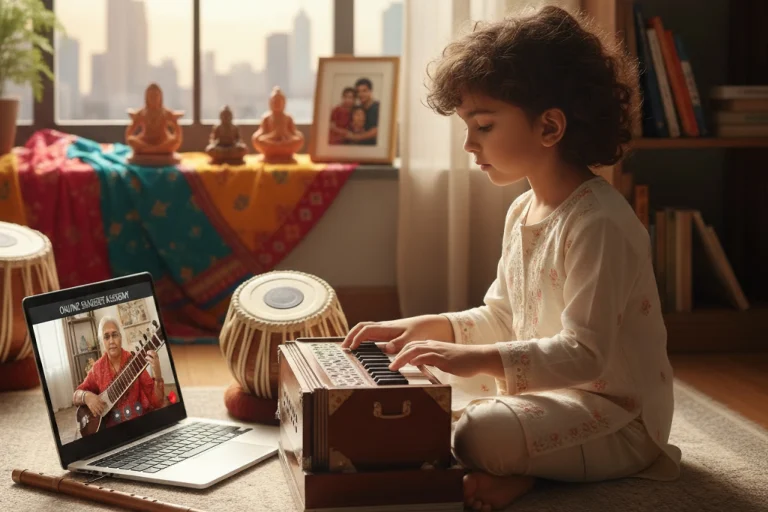
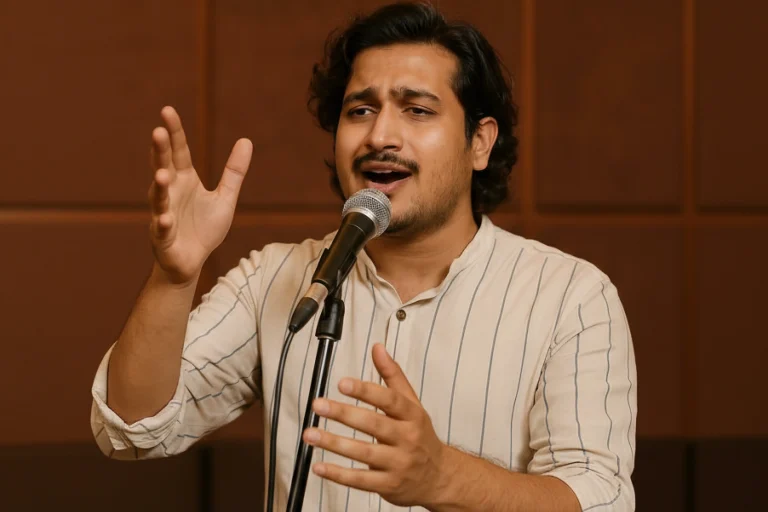
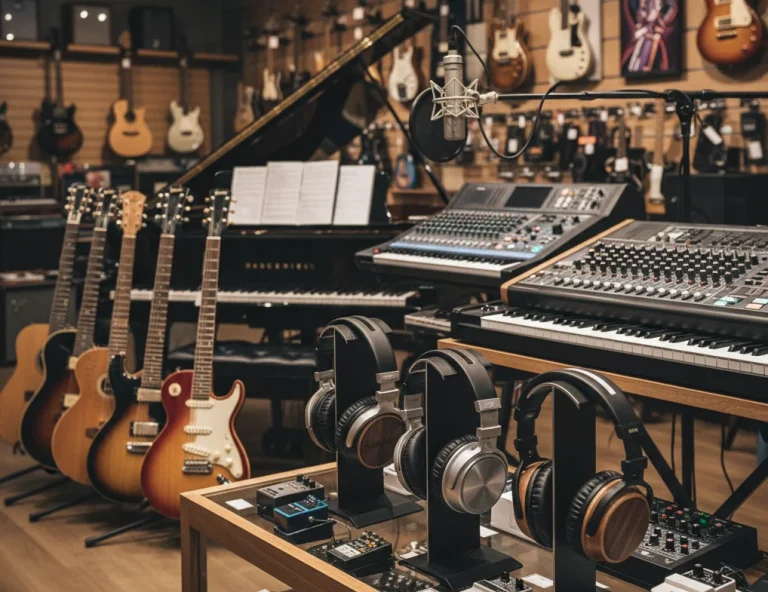

Wonderful information about Thumri, its origin and its types!!
Precious knowledge of the past has been presented in a compact and easy to understand manner.Artium is deeply rooted in the foundations of music, while foraying into the contemporary world of music in parallel.
Romiji:
What a lovely article on Thumri, it is awesome. This dying Art of India needs infusion of new life and your article appears to be a big effort in that direction. The information presented is enriching and eye opening to origin and evolvement of different types of Thumris.
Artium essentially provides the environment and encouragement to foster a new breeze for this old dying art. From the time that I read this article, it envigorated my feelings to sing a Thumri. When searched, I found “Beeti Na Bitaayii Raina” (from Amar Prem). I practiced and sang it to my Guruji (Romiji) and she really liked it.
Additionally, this article motivated me to write a Thumri (lyrics), composed it, and will be singing it to my Guruji in the upcoming class.
Correction: The Thumri song that I sang was “Raina Beeti Jaaye” (from Amar Prem), “Beeti Na Bitaayii Raina”.